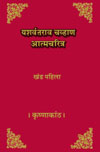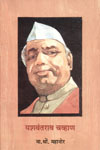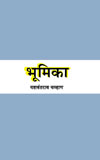What is control basically? Control, on the supply side, means the import from other countries and procurement from inside the country. Procurement inside the country also means making the marketable surplus available in the hands of Government so that that surplus can be taken to strategic points when an emergency arises.
What is control on the distribution side? On the distribution side, we have in this State what is known as statutory rationing in big cities and informal rationing in the rural areas. This, mechanism is supposed to perform two very important functions. One, which is very obvious, is that it guarantees equitable distribution and guaranteed distribution in the rationed areas to the consumers; and the second, which is not so obvious but is very important, is that it cuts off completely those areas where the purchasing power is more concentrated and more organised and thus cordons off the competitive source of demand from the existing supplies. This is a very vital function which the system of rationing does either under the system of control or under the system of decontrol. Taking these basic considerations of the system of control in view, we are trying to find out what are the advantages of the system of control and what are the advantages of the system of partial control, and we have tried to combine the advantages resulting from both these systems. That is how the new pattern of a food policy is gradually but definitely coming into existence. The advantages of the system of control are that it eliminates speculative purchasing and hoarding of foodgrains. Secondly, as I have said, it cordons off some strategic areas, certain cities like Bombay, Ahmedabad, Poona and Sholapur; and thirdly, it gives a sort of machinery which can be used in the days of emergency. These are possibly the three important advantages of the system of control. The partial decontrol system also gives certain advantages. They give a sort of freedom from the psychology of scarcity because control means regimentation of all sorts. The irksome features of controls create psychologically a bad effect.
So, partial decontrol gives freedom from such psychologically bad effects. There is also, as I said, internal procurement which gives the possibility of getting in our possession the marketable surplus. The partial decontrol system makes the marketable surplus completely free in the free zone. The third advantage which is very important is that it limits the commitments of the Government to feed the people to the minimum and only wherever it is absolutely necessary. These are the considerations which led us to accept this new pattern of food policy and that is how we are trying to run it. I need not take the time of the House in describing the features of the new policy because this House knows them, as the system is actually working for the last two or three months. But it is my responsibility to inform the House how it is working. For that also, we must try to find out what are the tests on which we can examine a particular system. For this system, I should say that there are five tests. The first is the general availability of millets in the open market. The second is the number of merchants coming forward to take out licenses to deal in millets. The third is the trend of offtakes from the Government shops, the fourth is the behaviour of the food prices in the open market; and the last but not the least is the psychological reaction of both the producer and the consumer. If we apply these five tests to this system, I have reason to believe that the system is working satisfactorily. As regards the general availability of millets, there was some difficulty in the first month as the private trade was not well organised. The traders took at least a month to take out licenses and so in the month of December there was a sort of erratic nature of the price of millets. But from the middle of January the situation improved and I have sufficient information at my disposal which gives me good reason to believe that the prices have shown a trend towards stabilization. As regards the number of merchants who came forward to deal in millets, in the month of January their number was about 6,000. In the month of February about the same number of merchants took out licenses and in the month of March a substantial number of merchants must have come forward to deal in millets.
























